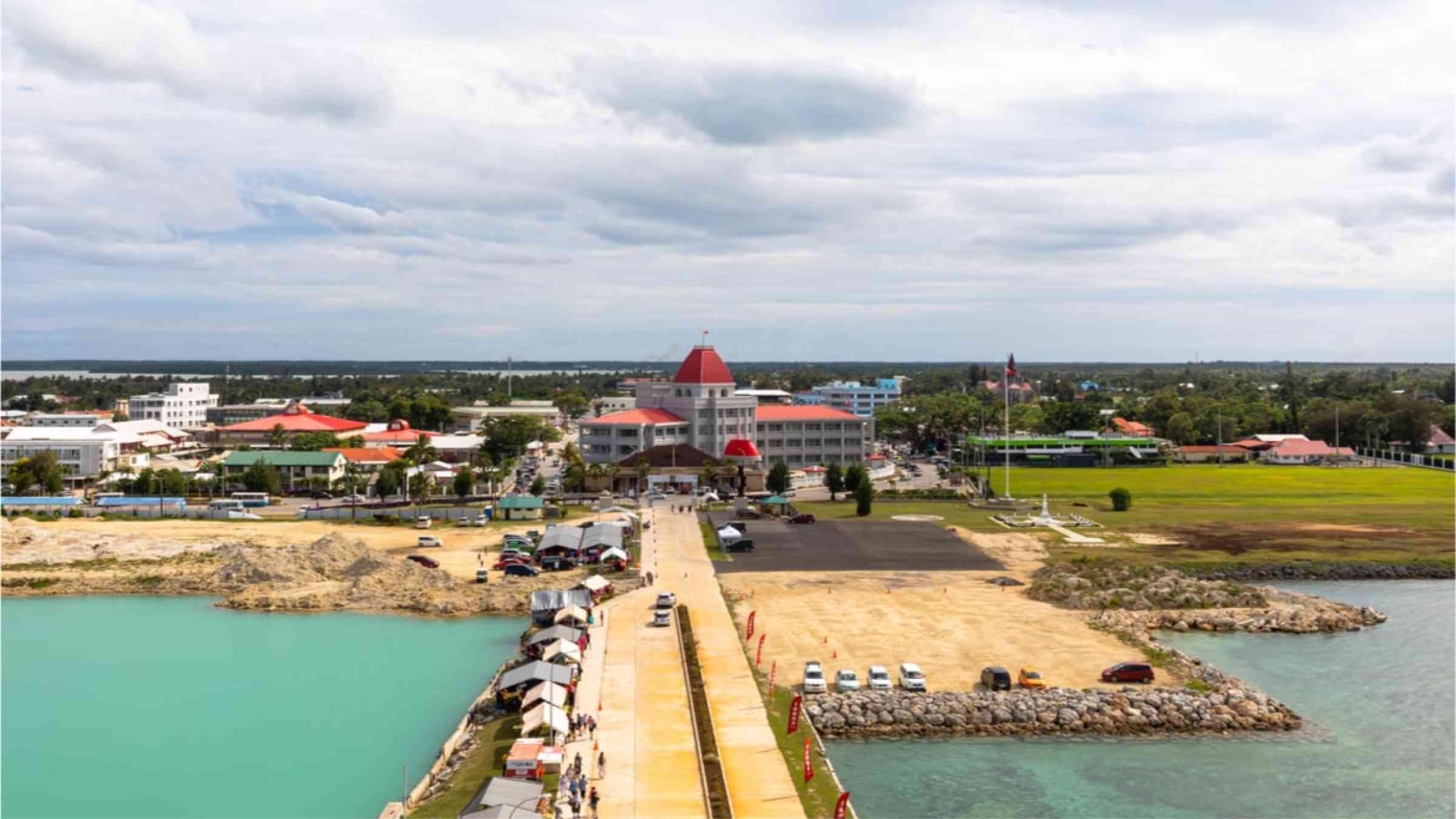Tonga recovers its voice in the wake of deadly volcanic eruption

The eruption of the Hunga Tonga-Hunga Ha’apai volcano in January 2022 was a stark reminder of how telecommunications preparedness can mean the difference between silence and life-saving response.
On the tiny and remote island of Vava’u in Tonga, a satellite phone crackles to life. An island resident presses the phone to his ear, uttering a cry of relief as he connects to his family in New Zealand, 2,382 kilometres away. “I am so happy to be talking to my family,” he says to the nearby disaster management officer, who is overseeing a line-up of 40 people waiting to use the phone.
Satellite phones and portable connectivity devices — these are the means of communications for people on the outer islands of Tonga in the aftermath of the massive and deadly eruption of the undersea Hunga Tonga-Hunga Ha’apai volcano on 15 January 2022.
The force of the volcanic blast shattered satellite connectivity as it sent a huge plume of ash and debris hurtling into the atmosphere. The explosion was heard as far away as Alaska. Located 65 kilometres north of Tonga’s capital, Nuku’alofa, the blast triggered a tsunami that smashed into the shores of Tonga’s 170 islands. Peak waves towered at heights of 50 feet, flattening homes, schools, and infrastructure on the low-lying coral island group of Ha’apai.
The entire island nation was left in shock as falling ash blanketed the landscape.
Then Tonga went silent. The undersea communications cable connecting Tonga to the rest of the world, and its own islands, was severed in two places during the eruption.
“We need to react now — we need to respond now.” This was John Dovale’s first thought when news of the disaster reached his office in Fiji, from where he coordinates the World Food Programme- (WFP)-led Emergency Telecommunications Cluster (ETC) preparedness and response operation in the Pacific.
“In that instance, we looked at who needed to be contacted in Tonga and how we could possibly reach them, knowing they were disconnected,” John says.
The ETC’s regional and global partners mobilized a rapid response. In multiple waves of deployment, WFP in Fiji dispatched three satellite phones, the International Telecommunication Union (ITU) sent another six. Iridium loaded all nine phones with free airtime.
Three portable satellite connectivity devices―known as broadband global area networks, or BGANs―reached Tonga within days. Télécoms Sans Frontières(TSF) equipped these terminals with free data.
The Government of Luxembourg shipped two high-capacity satellite dishes―called very small aperture terminals, or VSATs―in preparation to connect government responders and devastated communities on the outer islands of Vava’u and Ha’apai.
“We worked quickly, and that is testament to the global reach of the ETC,” John says.
“All the equipment went through Tonga’s strict COVID-19 safety protocols, which was challenging in an emergency context — but as with anything to do with disaster management and response, you adapt quickly and find ways to get your objectives achieved with the best possible outcomes — and we did that,” John explains.
“The equipment we sent gave Tongan authorities the means of communication to coordinate relief items and assistance to even the most remote outer islands,” John points out.
Paula Ma’u, Head of Tonga’s Ministry of Meteorology, Energy, Information, Disaster Management, Environment, Climate Change and Communications (MEIDECC) said, “The ETC responded with solutions for those in need in a most difficult time. The wake of the eruption and tsunami in Tonga was catastrophic.”
Tonga would remain disconnected from the world for the next five weeks, until the repair vessel―CS Reliance―arrived in the waters 37 kilometres offshore from Tonga to fix the international section of undersea cable. Communication on Tonga’s main island of Tongatapu is now restored.
For those in Vava’u and Ha’apai, the wait will be longer. The domestic cable connecting Tongatapu to these remote islands will take months to repair. The ETC and its partners are responding.
In Vava’u, the line of people waiting to connect to loved ones is now shorter. And amid the joyful family reunions, there is also tragedy.
Heartbreakingly, the last call of the day is made by a woman clutching her young daughter, who uses the satellite connectivity device to attend her husband’s funeral ceremony online. She had only just learned of his passing earlier that day.
Tonga is one of the most hazard-prone countries in the world. It borders the Pacific volcanic ring, increasing its risk of earthquakes and tsunamis, and is vulnerable to the gathering threats posed by climate change, especially on its outer islands.
The ETC and partners are building on the preparedness activities initiated in Tonga since 2016 by placing equipment in easily accessible locations in case of emergency, training local personnel to develop early warning systems, running disaster simulations, and creating national emergency telecommunications plans.
For Tonga and other high-risk countries, taking steps towards preparedness is critical to building the resilience of government and communities, readying them for the next disaster — whatever form it takes.